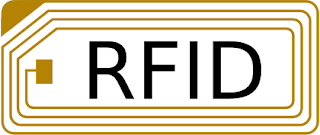After
a massive close down of thousands of websites found to be fake online
pharmacies using individuals claiming to be doctors and issuing fraudulent
prescriptions or selling counterfeit medicines, the authorities have imposed warnings to be the public to be
more cautious in any transactions done online especially on pro-health claiming
sites. In response, sales of online pharmacies began to drop, affecting even
the legitimate entrepreneurs online.
Although
most would not comment, there are those who filed their complaints for the
public to see such as the Canadian-based online pharmacy, BestCDS.info who
asserted that their products are legitimate. This company, along with that of
several others in UK stated that they never give prescriptions even when it is
only to comment on an inquiry but instead encourage their clients to seek a
physician first. The medicines prescribed by a legitimate doctor is then
emailed or faxed to them.
The
manager, under the name Carl, admitted he had lost most of his clients who
suspected his business and has therefore spoiled his good name. In an interview
with The Peterson Group, a
non-profit organization providing imperative information on counterfeit
medicines, one of Carl’s clients who chose to speak anonymously accused Carl’s
company for selling “sugar pills”. Carl then resolutely stated that these
allegations are without merit and that his company has never sold any fraud
medicines. The case is still under investigation as the drugs were traced to be
manufactured in Jakarta, Indonesia.
According
to Food and Drug Administration (FDA), “Legitimate pharmacy sites on the
Internet provide consumers with a convenient, private way to obtain needed
medications, sometimes at more affordable prices. The elderly and persons in
remote areas can avoid the inconvenience of traveling to a store to purchase
medications. Many reputable Internet pharmacies allow patients to consult with
a licensed pharmacist from the privacy of their home.”
But
this is not without risk. There is still no knowing whether the site is safe
just because the purchase is convenient and the appearance looks legitimate
enough.
To
be sure, FDA encourages consumers to first check http://www.nabp.net/ where a
list of illegitimate online pharmacies is published. These include those that claim to dispense
drugs without a prescription or sell products not approved by the FDA, and, of
course, fake online pharmacies that are downright fraudulent.
In
addition to being included on this list, other warning signs of fake online
pharmacies include sites that don’t provide a physical address for their
business or don’t list a verifiable phone number.










